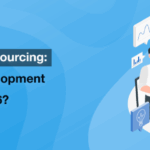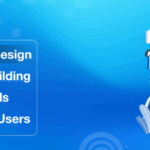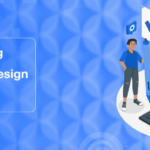
Going into 2026, every business needs to accelerate the building of fast, secure, and scalable digital experiences. Websites and applications are no longer just online brochures-they have become revenue engines, customer engagement platforms, and the core of digital transformation. That’s why choosing between in-house web development and outsourcing web development has become one of the most strategic decisions for modern organizations.
Indeed, rising development costs, global talent shortages, and rapid advancements in web technology have made this choice no less complex than ever. The right decision can save your business time and money by averting countless setbacks. This blog deep-dives into the differences, advantages, challenges, and use cases of each model while aligning everything with a strong web development strategy for 2026.
What In-House and Outsourcing Really Mean in Web Development
In-House Web Development
In-house development implies building your own internal team of front-end developers, back-end engineers, UI/UX designers, QA testers, and project managers. Your organization retains full control over:
- Technology choices
- Development standards
- Product roadmap
- IP rights and security
- Day-to-day workflow
This model is best suited for companies with long-term, ongoing development needs.
Outsourcing Web Development
Outsourcing web development means engaging an external partner or specialist team. Normally, such teams would provide:
- Customized web development service
- High-level UI/UX and web design services
- Front-end & back-end engineering
- CMS development: WordPress, Drupal, custom CMS
- API integrations and cloud-ready architectures
- Quality assurance & ongoing support
A custom web development company provides immediate access to specialized talent, saving time and reducing overhead.
An example of such a partner is Information Synergies, LLC, known for delivering scalable, custom digital solutions for businesses of any size.
Key Features & Considerations for Each Model
In-House Web Development: Key Characteristics
Advantages
- Total Control: Teams work with internal stakeholders.
- Culture Alignment: Developers understand company values and user expectations.
- Faster Communication: No barriers of time zones or partner dependencies.
Challenges
- High Cost: Salaries, benefits, tools, and training mount up.
- Slower Hiring: Finding senior or specialized developers takes time.
- Skill Gaps: No single team can cover every modern tech stack.
Key Characteristics of Outsourced Web Development
Advantages
- Immediate Expertise: Immediate access to expert engineers and designers.
- Scalability: Ramp resources up or down with ease.
- Lower Cost: No hiring expenses, benefits, or internal tool costs.
- Faster Time-to-Market: Ideal for MVPs, redesigns, CMS projects, and SaaS builds.
Challenges
- Communication Gaps: Needs structured communication.
- Vendor Dependency: The quality depends on the partner.
It can be even more effective to outsource work with a partner like Information Synergies, LLC, which offers transparency in project management, strong technical capabilities, and regular communication habits.
Pros & Cons: A Quick Snapshot
In-House Web Development
Pros:
- High control
- Culture-fit team
- Better alignment with long-term vision
Cons:
- Expensive
- Slow hiring cycle
- Limited specialized skill sets
Outsource Web Development
Pros:
- Affordable
- Broad and deep technical expertise
- Faster launch timelines
- Flexible and scalable resource models
Cons:
- Requires structured communication
- Possible time-zone challenges
A Detailed Comparison: Key Decision Criteria for 2026
Your web development strategy for 2026 should consider cost, speed, scalability, expertise, and long-term goals. Here is a deeper comparison:
1. Cost Efficiency
In-House Costs Include:
- Developer salaries
- HR & recruitment
- Benefits and insurance
- Tools and software licenses
- Office & equipment
Outsourcing Costs Include:
- Only development service fees
- No cost for recruitment or licensing
- Flexible pricing models: hourly, dedicated team, fixed cost
2. Talent & Expertise Availability
In-house teams often lack diverse or niche expertise, such as:
- Advanced JavaScript frameworks
- Custom CMS development
- API engineering
- Cloud-native development
Outsourcing means gaining immediate access to experts in multiple stacks.
3. Speed & Delivery Timeline
- In-house teams usually take several months to hire before development starts.
- Outsourced teams can start in days, which is perfect for urgent launches.
4. Scalability & Flexibility
- Sudden upscaling isn’t easy with in-house teams.
- Outsourcing allows rapid scaling as project needs evolve.
5. Risk & Security
- In-house gives maximum control over data and IP.
- Outsourcing requires NDAs, secure tools, and strict processes-which reputable companies already follow.
6. Alignment with Business Growth
The right model depends on whether your website/app is:
- Core to your business
- A one-time build
- A long-term evolving product
- A quick go-to-market project
Cost Breakdown: What to Expect in Each Model
In-House Web Development Costs
Companies often underestimate the total cost of building an in-house team. Common cost elements include:
- Recruitment time & fees
- Salary packages
- Training and Skill Upgrades
- Hardware and software licensing
- Employee turnover risk
Outsourcing Web Development Costs
Outsourcing provides highly predictable costs:
- Pay-only-for-work
- No cost of hiring or training
- No infrastructure cost
- Lower TCO (Total Cost of Ownership)
Financial predictability makes outsourcing highly suitable for startups, SMEs, and enterprise digital transformation.
When Should You Choose In-House vs Outsourcing?
Choose In-House Web Development If:
- Your web platform needs daily iteration.
- Your business model involves proprietary technology
- Data security and IP ownership are paramount.
- You have the budget to build a full product team.
Choose Outsourcing Web Development If:
- You need fast delivery
- Your budget is limited.
- You need a wide variety of contemporary technical skills.
- You are building an MVP or redesigning your site.
- You need expertise in CMS, API, or custom software.
Hybrid Model (Best of Both Worlds)
Nowadays, many companies use a hybrid method of:
- Product vision and strategy are handled by the internal team
- Execution/engineering is done by external teams
This model combines efficiency, speed, and control.
2026 Decision Checklist: What to Consider
Before choosing your development model, review the following:
Strategic Questions:
- How critical is the project to your business?
- What skills are your team currently missing?
- How much is your budget?
- How quickly do you need the product to go live?
- Do you need temporary or long-term development capacity?
Technical Questions:
- Does your project require specialized frameworks?
- Will you need any continued improvements?
- Is it a CMS or custom web development?
- Do you need a responsive design or complex integrations?
Working with experienced partners such as Information Synergies, LLC enables a business to make the right strategic choice based on goals, technology needs, and budget.
Conclusion
In this fast-evolving digital world, the debate of in-house vs outsourcing web development does not have a one-size-fits-all answer. The right choice will, therefore, depend upon your timeline, budget, requirement for expertise, and long-term goals.
For businesses aiming to move fast, reduce cost, and access advanced skills, outsourcing often becomes the winning strategy, especially when supported by a reliable custom web development company.
For organizations with long-term strategic needs in digital products, an in-house team offers continuity and control.
Above all, your strategy for web development in 2026 should be flexible, scalable, and future-ready.
Contact for Consultation
If you’re not sure which best fits your business, in-house or outsourcing, Information Synergies, LLC can help you make a clear, strategic decision.
Contact us today for a free consultation and customized web development roadmap.





